EDA and Data Augmentation
Challenges
The images come in different shapes and can be color or black and white. We will have to reshape the images to be 250x250 pixels which will require resizing some images or overlaying some images on another background. If we were to compress or expand some of the images to fit the 250x250 pixels we would lose some of the necessary features we need to classify the dogs by breeds. We can make use of the annotations given in the Stanford dogs dataset that give the location of the dog in the image such that images of humans or other dogs do not confuse the neural network. A challenge that comes with this is the potential of cutting out critical portions of the dog when cropping to a square image.
Because the database only contains 20,580 images, it only provides ~150-200 images per breed. We will have to explore data augmentation techniques and different classification techniques.
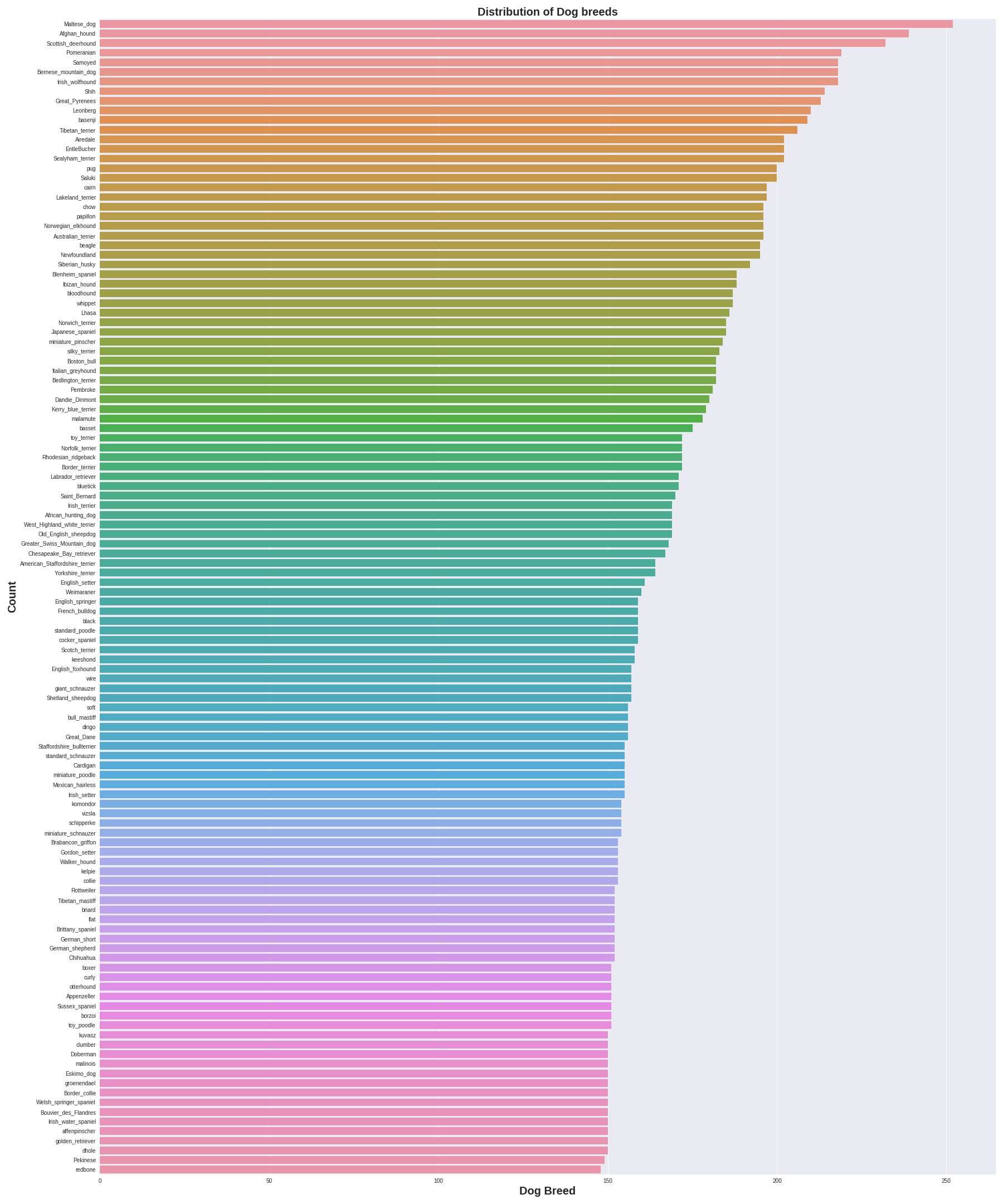
The following plot shows the distribution of image size ratio (height/width). The range of the size ratio is from 0.4-2.0 with most images having ratios above or below 1. These wide ranges of height and width imply that rescaling all the images to a size of 250x250 could possibly lose the dog.
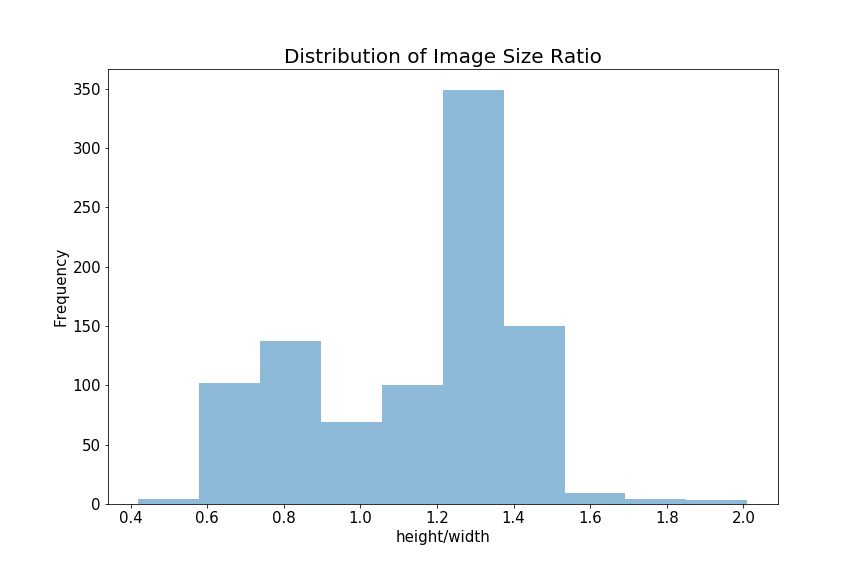
Possible solutions
To get more images per class, we use breed classes instead of breeds to classify our dogs, leaving us with 8 breed classes and at least 700 dogs per class. These breed classes correspond to the the American Kennel Club breeding classes. The hybrid and NAN classes were created for the dogs that could not be classified in the 8 super breeds.
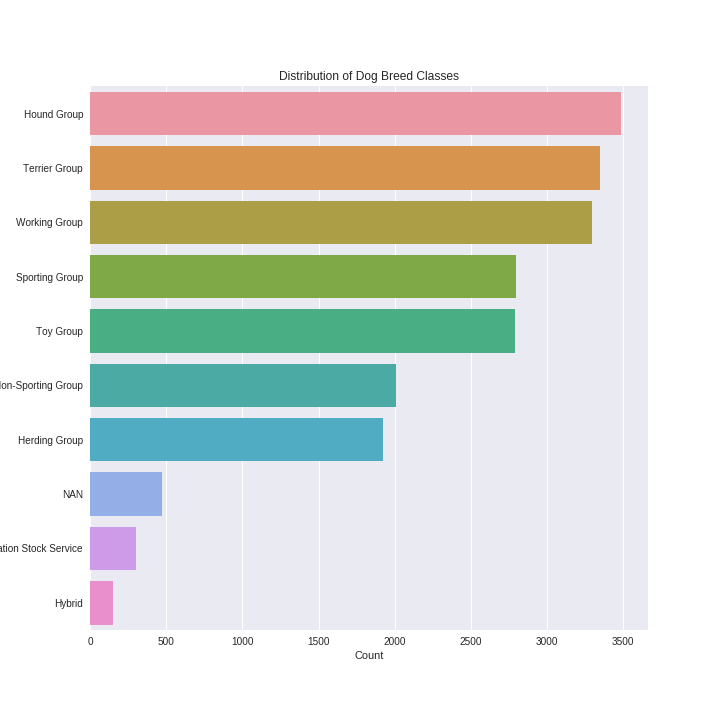
After classifying per breed we decided to use annotation to find the location of the dog in each image. The following results show the distribution size ratio of (height/width) of the location the dog in each image per breed. For each breed we have right-skewed distributions. The results show that for the eight classification breeds most of the dogs are centered (the 1.0 ratio is the most freqent per breed). The size ratio higher/lower than 1.0 showed us that we would be cropping part of the dog when we scaled the images.
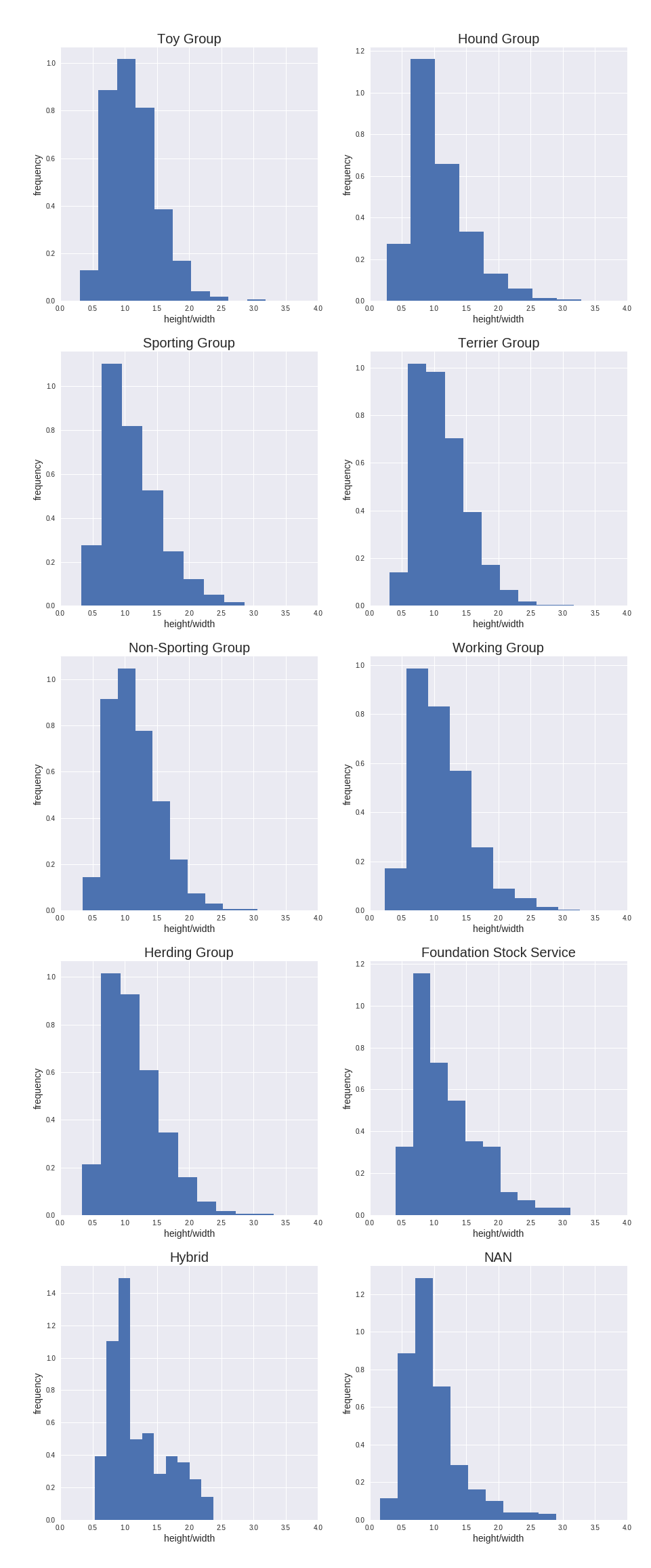
We examine the diversity of breeds per breed class. A high breed diversity in a breed class can complicate the classification because the neural net has to find similarities throughout a wide range of breeds in that class. Besides FSS and NAN, the breeds all share some traits that group it into an AKC breed class. The Terrier, Sporting, and Hound super breeds had the most variety per class. In our model, we can examine if larger variety per class will show the greatest error when we train the neural network.
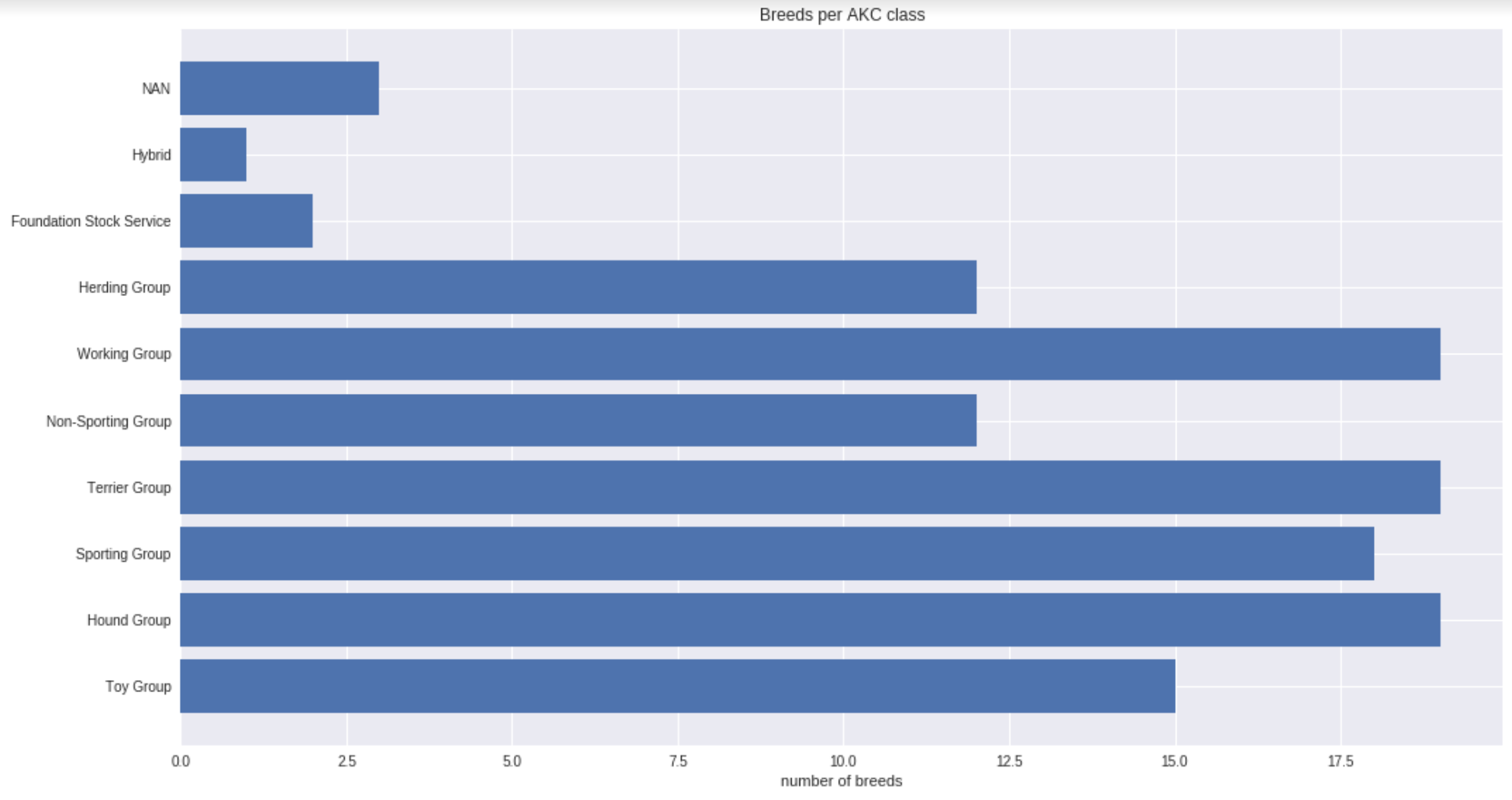
Data Augmentation
After classifying the breeds into super breeds we were left with 8 breeds classes with at least 700 dogs per super breed class. In order to get more images to train our neural network model we decided to do data augmentation using ImageDataGenerator from keras. This image preprocessing technique makes minor edits to the original images by doing rotations, translations, or flipping the original dataset which leads to the neural network model took at the most important features per class breed. For this project we did the following alterations:
datagen = ImageDataGenerator(
featurewise_center=True,
featurewise_std_normalization=True,
rotation_range=20,
width_shift_range=0.2,
height_shift_range=0.2,
horizontal_flip=True)
This function set the input mean to 0 over the dataset, normalized the data by dividing by the input std, has a 20° range for random rotations, specified a range of 20% of the pixels to be shifted by width and by height, and allows inputs to be randomly flipped horizontally.
Final Data Used
After the EDA results it was concluded that data augmentation would not be used for the models because we would reach the RAM storage limits. One way we could’ve avoided this issue was to couple the ImageDataGenerator with a flow_from_directory such that the images would not be stored within RAM.